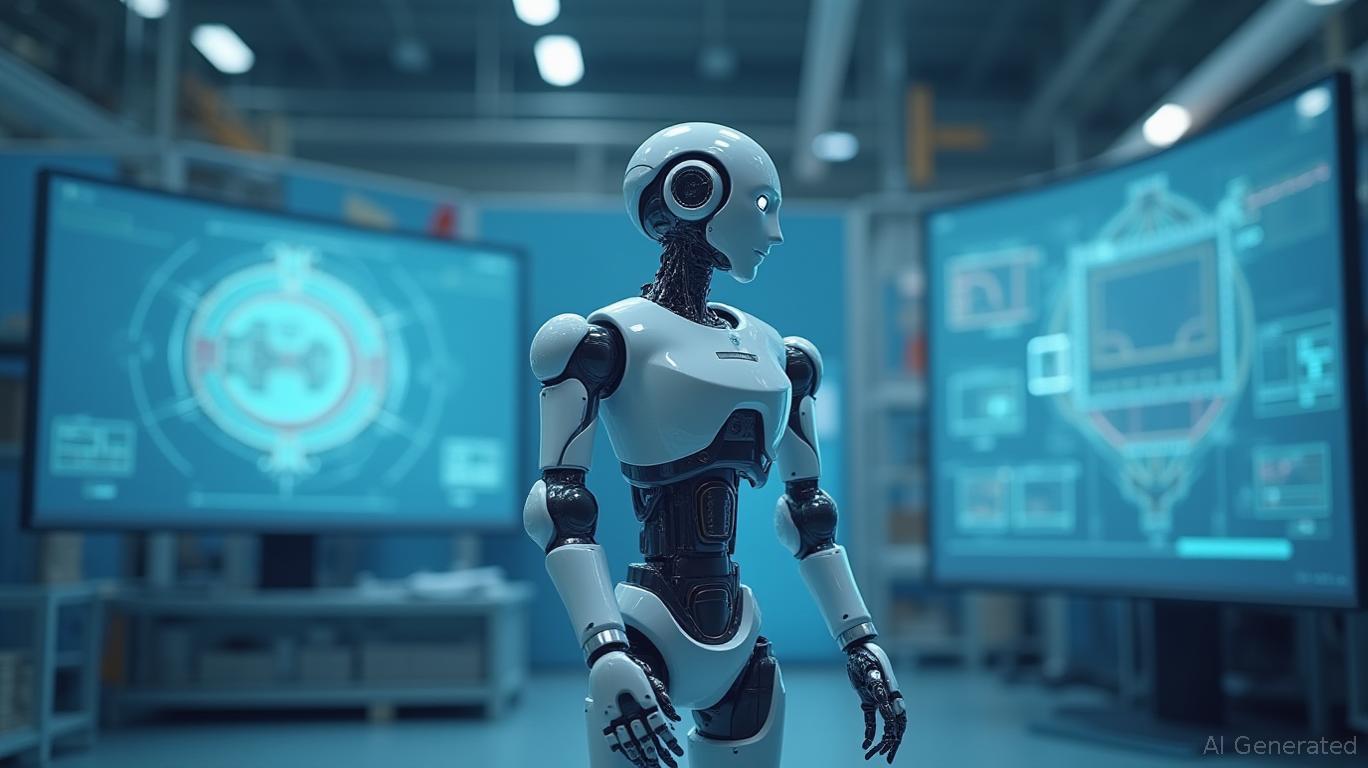Hexagon's Aeon Robot: A Scalable Solution to the Labor Crisis in Industrial Automation
The global industrial sector faces a stark reality: a $50 million annual cost burden from unfilled automation jobs, exacerbated by labor shortages and rising operational complexity. Enter Hexagon's Aeon humanoid robot, a cutting-edge automation platform engineered to tackle this crisis through strategic partnerships and a “self-improving” AI architecture. By integrating NVIDIA's AI stack, Microsoft's cloud infrastructure, and Maxon's advanced actuators, Aeon emerges as a prime investment opportunity for investors seeking exposure to a robotics platform poised to dominate industrial automation. Here's why the next six months could be pivotal.

The Problem: A Labor Shortage Crisis with a $50M Price Tag
Industrial sectors like automotive, aerospace, and logistics are grappling with a persistent shortage of skilled labor. According to the International Federation of Robotics, 45% of manufacturers report difficulty filling automation-related roles, costing industries an estimated $50 million annually in lost productivity. The gap is only widening as demand for precision tasks—from part inspection to asset maintenance—outpaces human capacity. This creates a clear need for scalable automation solutions that can learn, adapt, and operate autonomously.
The Solution: NVIDIA's AI Stack Powers Aeon's “Self-Improving” Edge
Hexagon's Aeon robot leverages NVIDIA's full-stack AI capabilities to address this challenge. At its core lies the NVIDIA Jetson Orin, an onboard supercomputer enabling real-time decision-making for tasks like part manipulation and defect detection. Paired with the Isaac Platform, Aeon's AI undergoes accelerated training via simulation: Isaac Sim generates synthetic motion data, while tools like Isaac GR00T and Mimic enable learning from human demonstrations. This reduces development time from months to weeks and ensures Aeon's skills evolve continuously—a “self-improving” trait critical for complex industrial environments.
The NVIDIA Omniverse platform further amplifies Aeon's value by creating digital twins of industrial assets. By integrating reality-capture data from Aeon's sensors into Hexagon's Reality Cloud Studio, Omniverse enables high-fidelity virtual models that streamline collaboration and predictive maintenance. This fusion of physical and digital workflows is already attracting enterprise interest, with pilots underway at Schaeffler (automotive components) and Pilatus (aerospace engineering).
NVIDIA's stock has outperformed the broader market by 25% over the last year, reflecting investor confidence in its AI-driven growth. Aeon's deep integration with NVIDIA's stack positions Hexagon to benefit directly from this momentum.
Pilot Programs: Proof of Demand, Catalyst for Scale
Hexagon's current pilot programs with Schaeffler and Pilatus are not mere tests—they are proof points for Aeon's commercial viability. At Schaeffler, Aeon is automating machine tending and quality inspection in automotive manufacturing, tasks previously requiring specialized labor. At Pilatus, it's aiding in aircraft component inspection and assembly, reducing downtime and human error. These pilots, set to conclude within six months, will validate Aeon's ability to deliver ROI through cost savings and efficiency gains. Positive results could trigger broader enterprise adoption, with Hexagon targeting a commercial rollout by late 2025.
The stakes are high: the global industrial robotics market is projected to grow at a 12% CAGR to $200 billion by 2030. Aeon's modular design, cloud-updatable AI, and digital twin integration make it uniquely positioned to capture this upside. Investors should monitor two near-term catalysts:
1. Pilot results by Q4 2025: Successful outcomes could accelerate partnerships and orders.
2. Battery-swapping tech adoption: Aeon's continuous operation capability (no downtime for recharging) is a competitive advantage in 24/7 manufacturing environments.
Investment Thesis: A Robotics Platform with “Moats” in AI and Partnerships
Aeon's value lies not just in its hardware but in its AI-driven intelligence and ecosystem of partners. NVIDIA's Isaac platform reduces development costs for customers, while Microsoft's Azure cloud ensures scalability. Maxon's actuators provide unmatched precision, and Omniverse's digital twin capabilities create a defensible moat against competitors. This ecosystem creates a flywheel effect: more data from deployments improves Aeon's AI, attracting more customers and partners.
For investors, the six-month timeline offers a clear inflection point. If pilots meet or exceed expectations, Hexagon's valuation could rise sharply, mirroring the trajectory of NVIDIA or industrial automation leaders like ABB. Even a partial adoption in target sectors could unlock a multi-billion-dollar market opportunity.
In conclusion, Aeon is more than a robot—it's a scalable solution to an existential labor crisis. With strategic tech partnerships driving its AI evolution and pilot programs proving its worth, this platform is primed to deliver both operational value and investment upside. For investors, the next six months could mark the start of a transformative era in industrial automation.
Hexagon's stock has remained steady amid broader market volatility, suggesting investors are already pricing in Aeon's potential. A post-pilot earnings beat could unlock significant upward momentum.
Action Item: Monitor pilot outcomes closely. Consider a position in Hexagon (or its partners like NVIDIA) as catalysts unfold, with a focus on long-term appreciation as Aeon scales.
Josh Nathan-Kazis
June 06, 2025

Comments
No comments yet